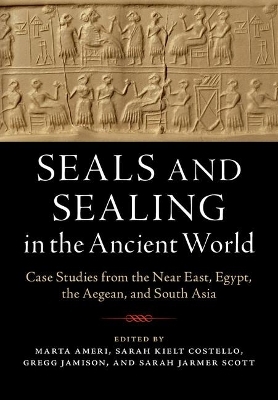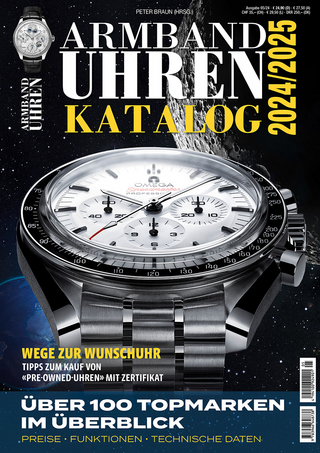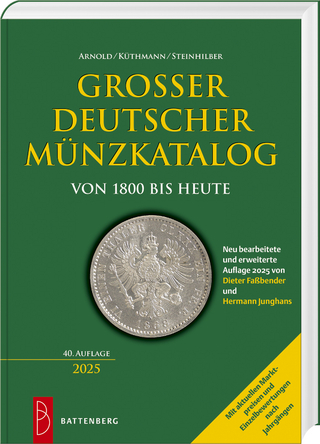
Seals and Sealing in the Ancient World
Cambridge University Press (Verlag)
978-1-107-19458-8 (ISBN)
Studies of seals and sealing practices have traditionally investigated aspects of social, political, economic, and ideological systems in ancient societies throughout the Old World. Previously, scholarship has focused on description and documentation, chronology and dynastic histories, administrative function, iconography, and style. More recent studies have emphasized context, production and use, and increasingly, identity, gender, and the social lives of seals, their users, and the artisans who produced them. Using several methodological and theoretical perspectives, this volume presents up-to-date research on seals that is comparative in scope and focus. The cross-cultural and interdisciplinary approach advances our understanding of the significance of an important class of material culture of the ancient world. The volume will serve as an essential resource for scholars, students, and others interested in glyptic studies, seal production and use, and sealing practices in the Ancient Near East, Egypt, Ancient South Asia and the Aegean during the 4th-2nd Millennia BCE.
Marta Ameri is an Assistant Professor of Art History at Colby College, Maine where she teaches courses focusing on Ancient, Medieval, and Islamic Art. Her research focuses of the role the seals play as markers of identity and as indicators of intercultural exchange in the Ancient Near East and South Asia. Her current research focuses on the visual analysis of seals of the Indus Valley Civilization. She is also working on a detailed study of the seals and other artifacts of administration found at the site of Shahr-i Sokhta in Iran. She has excavated in Italy, Greece, Turkey, Syria, India, and Oman. Sarah Kielt Costello, Assistant Professor of Art History at the University of Houston, Clear Lake, is co-director of the Collections Analysis Collaborative (CAC), a research initiative with Rice University, Houston and Houston's Menil Collection, focused on the art of the ancient Mediterranean World. She has conducted field research in Cyprus, Turkey, Israel, and Greece, and in 2013 studied in Greece as a Fulbright Fellow in the Summer Session at the American School of Classical Studies, Athens. In 2012, she was awarded the Provost's Teaching Excellence Award at the University of Houston. She is a member of the Archaeological Institute of America, the American Schools for Oriental Research, and CAA. Gregg Jamison is an Assistant Professor of Anthropology at the University of Wisconsin, Madison. His research focuses on seal production and use in the Indus Civilization, combining experimental, ethnoarchaeological, and formal stylistic approaches to link variability in carving styles and techniques with the social, economic, and political structures in which it took place. More broadly, Gregg is interested in craft production and the organizational dynamics of the world's earliest urban societies. He received his Ph.D. from the Department of Anthropology at the University of Wisconsin, Madison. Sarah Jarmer Scott received her Ph.D. in the History of Art from the University of Pennsylvania in 2005. She has worked at the Metropolitan Museum of Art, and since 2007 been teaching at Wagner College where she is Associate Professor of Art History. Her dissertation examined Early Dynastic seal imagery from Ur, looking specifically at its relationship to early cuneiform writing. In additional to publications on Assyrian palace reliefs, she has published on curatorial projects at the Anderson Galleries in Buffalo, the pedagogy of Art History, and Community Art and Civic Engagement. She has excavated in Italy, Tunisia, and Greece.
Preface Joan Aruz; 1. Introduction: small windows, wide views Marta Ameri, Sarah Kielt Costello, Gregg Jamison, Sarah Scott; Part I. The Ancient Near East and Cyprus: 2. Administrative role of seal imagery in the early Bronze Age: Mesopotamian and Iranian traders on the Plateau Holly Pittman; 3. Slave labor: Uruk cylinder seal imagery and early writing Sarah Jarmer Scott; 4. The first female bureaucrats: gender and glyptic in 4th-3rd Millennia Northern Mesopotamia Andrew McCarthy; 5. Rematerializing the early dynastic banquet seal Sarah Kielt Costello; 6. Sealing practices in the Akkadian period Yelena Z. Rakic; 7. Authenticity, seal recarving, and authority in the ancient Near East and Eastern Mediterranean Joanna Smith; Part II. South Asia and Persian Gulf: 8. Indus seals and glyptic studies: an overview Asko Parpola; 9. Letting the pictures speak: an image-based approach to the mythological and narrative imagery of the Harappan world Marta Ameri; 10. Understanding Indus seal carving traditions: a stylistic and metric approach Gregg Jamison; 11. Operational sequences and stamp seals: a new approach to identifying groups of seal carvers in the Indus civilization Adam Green; 12. Seals and sealing technology in the Dilmun culture: the post Harappan life of the Indus Valley sealing tradition Steffen Laursen; Part III. Egypt: 13. The evolution of Ancient Egyptian seals and sealing systems Joe Wegner; 14. Early dynastic sealing practices as reflection of state formation in Egypt? Ilona Regulski; 15. Sealings and seals from pyramid Age Egypt John Nolan; 16. The administrative use of scarabs during the middle kingdom Daphna Ben Tor; 17. Middle and new kingdom sealing practice in Egypt and Nubia: a comparison Stuart Tyson Smith; Part IV. Aegean: 18. Introductory remarks, Aegean Judith Weingarten; 19. Aegean Bronze Age sealstones and fingerrings: chronology and functions John Younger; 20. An Aegean seal in Greek hands? Thoughts on the perception of Aegean seals in the Iron Age Maria Anastasiadou; 21. Cryptic glyptic: multivalency in Minoan glyptic imagery Erin Mcgowan; 22. The magic and the mundane: the function of 'talismanic class' stones in Minoan Crete Angela Murock Hussein.
| Erscheinungsdatum | 07.01.2018 |
|---|---|
| Zusatzinfo | Worked examples or Exercises; 15 Tables, black and white; 25 Plates, color; 75 Halftones, black and white |
| Verlagsort | Cambridge |
| Sprache | englisch |
| Maße | 188 x 263 mm |
| Gewicht | 1270 g |
| Themenwelt | Kunst / Musik / Theater ► Kunstgeschichte / Kunststile |
| Sachbuch/Ratgeber ► Freizeit / Hobby ► Sammeln / Sammlerkataloge | |
| Geisteswissenschaften ► Archäologie | |
| ISBN-10 | 1-107-19458-X / 110719458X |
| ISBN-13 | 978-1-107-19458-8 / 9781107194588 |
| Zustand | Neuware |
| Haben Sie eine Frage zum Produkt? |
aus dem Bereich


